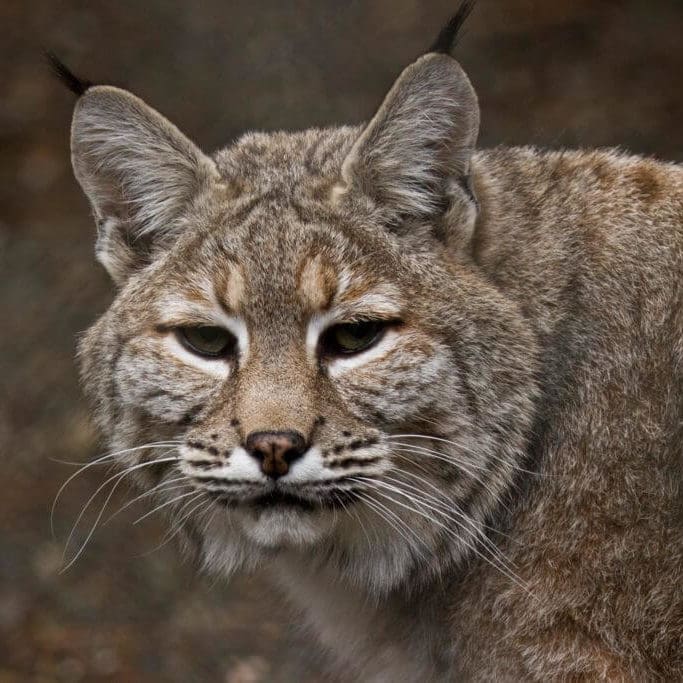Bobcats are one of the most common wildcats in the United States. They are named for their short bobbed tails, and have characteristic tufts of fur at the top of their ears that serve as camouflage and help filter sound waves down into their ears while they are hunting. They use hearing as their primary sense for hunting and spend a large amount of time sitting or crouching, waiting to ambush their next meal. Interestingly, bobcats in Western Oregon tend to have darker, more distinguished markings than those in Eastern Oregon. Most cats have retractable claws which prevents the claws from wearing down and becoming dull. When they need to, they can extend their claws to climb trees or take down prey. Bobcats can last long periods without food, but will eat heavily when prey is abundant. During lean periods, bobcats will often prey on larger animals that they can return to feed on later.
Bobcat
Lynx rufus
- Classification: Mammal
- Lifespan in Captivity: 25yrs
- Lifespan in the Wild: 10-12yrs
- Length: 3ft
- Weight: 15-30lbs
- Height: 2ft (at shoulder)
- Range: North America
- Habitat: Diverse - forests, swamps, deserts, near urban interface
- Diet: Carnivore
- Diet in the Wild: reptiles, small mammals, birds
- Diet at Wildlife Images: donated meats, venison, elk, poultry

